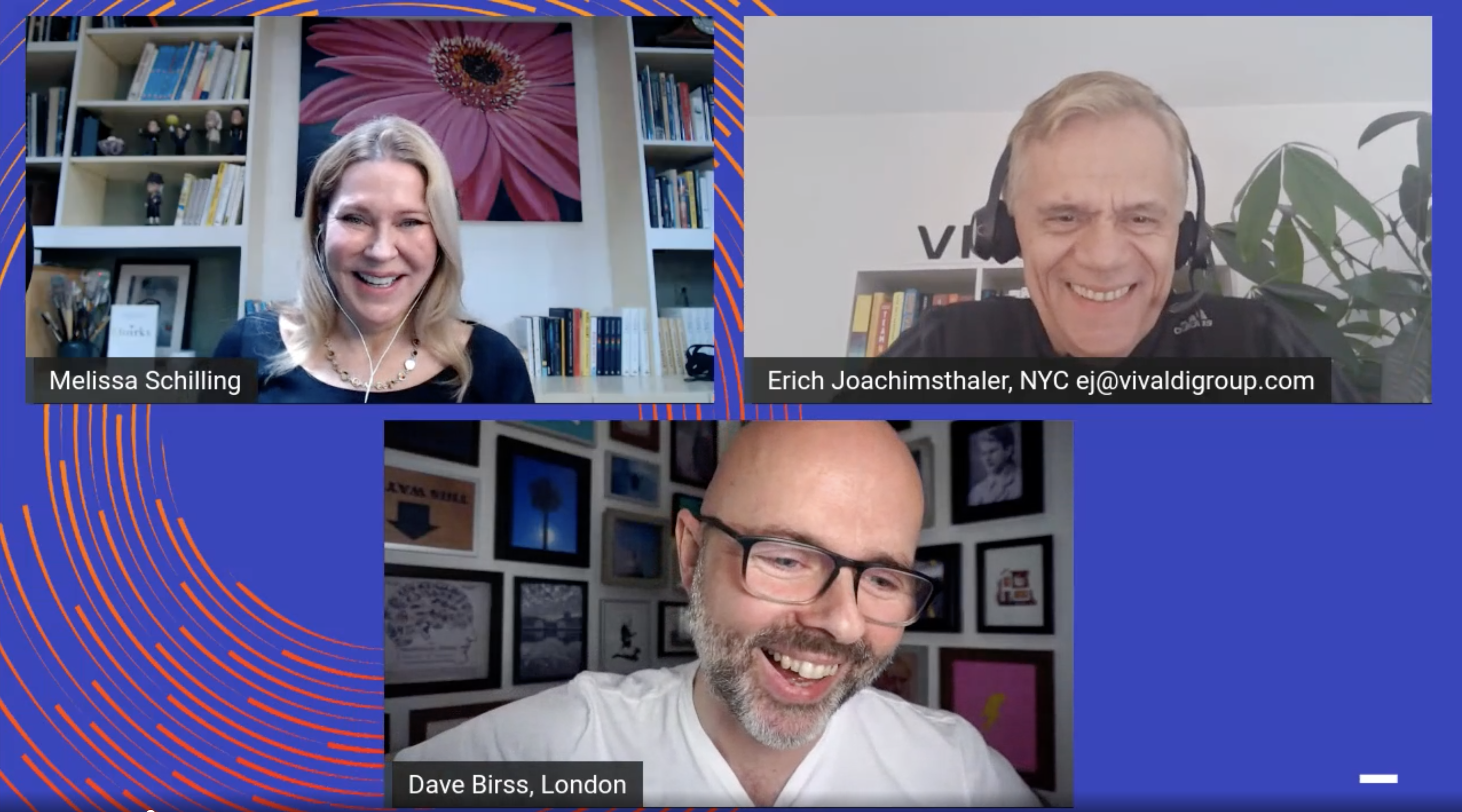Melissa Schilling on Breakthrough Business Innovation

As the world grapples with the coronavirus pandemic, businesses are struggling more than ever to adapt to the crisis. Considering changing times and accelerating digital transformation, the most recurrent question is, when is the ideal time for innovation? According to Melissa Schilling, one of the world’s leading innovation experts, the time is now. Author and Professor of Management and Organizations at New York University’s Stern School of Business, Melissa recently joined our CEO Erich Joachimsthaler to discuss innovation during a crisis; nurturing and facilitating breakthrough innovation in ourselves, our teams, and our businesses; and what it means to be well-positioned for success.
 Here are some key principles from Melissa Schilling:
Here are some key principles from Melissa Schilling:
1. Crisis is a great catalyst for change. A crisis allows people to become less rigid and consider new alternatives. People are willing to try new things and be more accepting of change because they are aware that the norm has already been broken. The pandemic urged people to try video conferencing, experimenting with new forms of education and new business models for running a company and employing people. Referencing history, Melissa recalls how the oil crisis led to huge innovations in solar, thermal, and wind power.
“If you are not innovating during times of crisis, you are missing a huge opportunity. When things are already disrupted, that’s a great time for disruptive innovation.” – Melissa Schilling
Breaking into consumers’ attention span was a lot harder before, as opposed to the current climate where they want to see what the potential solutions are and are willing to try innovative recommendations. That is not to say, that the innovations are limited to the pandemic alone, but a lot of those innovations are going to be long-lasting and outlive the crisis.
2. A platform business model is a propitious approach for disruption and innovation. The reason for that is because a platform business model enables a large number of small players who otherwise might not have access to or gain traction into the market to now have a way to get levered into it. To illustrate, Melissa cites Apple as an example. Apple’s App Store has enabled small companies to sell a product to a big market and while they don’t all succeed, many are successful and getting access to the market in a way that they could have never had access to before.
“Almost all of these ecosystems arose because they allow you to solve some consumer value proposition or create user value proposition, that could not be as easily solved by integrated firms that were totally independent from each other.” – Melissa Schilling
3. In the long run, you must distribute value in an equitable way. How firms allocate value is critical, as allocating value fairly will motivate providers to enter. An exception to this is cases where organizations have managed to capture the market so well that it is difficult for other players to enter.
“In other markets switching costs and the barriers to entry are not so high, which is why in the long run you’re going to have to distribute value in a way that makes all your provider’s happy or they’ll leave you for another ecosystem.” – Melissa Schilling
Here are the three simple steps to adopt the mindset of an innovator:
- Great innovators like Steve Jobs, Elon Musk, and Marie Curie shared a common trait of incredibly high self-efficacy. Building a strong sense of self-efficacy, which means, a person’s belief in their capabilities to overcome any obstacle to achieve their goals, determines what the goals are that we choose to pursue and how we go about accomplishing them. People who exhibit high self-efficacy don’t perceive risk the same way because of their faith in their capacity to succeed.
- Persistence, a subset of efficacy, is a very defining trait behind every great innovator. Adopting a can-do attitude, and consistently applying yourself to a problem despite facing failure and obstacles is a big factor to help you achieve success.
- An important element that enables persistence and self-efficacy is idealism. All innovators share keen idealism, where they set a grand goal, which takes precedence over peripheral accomplishments like money, fame, and reputation. If you have a goal or a solution to a problem, then you must be willing to relinquish your pride.
Conclusion:
While the COVID-19 pandemic altered how companies interact with their customers and how customers interact with them, the current climate also unlocked a room of opportunities and a glut of data into consumer behavior for innovation and disruption. Prioritizing innovation, in addition to a shared and equitable value system, will be the key to unlocking post-crisis growth.
Watch the full event here:
04:20 – Innovating in a crisis
07:12 – Success of platforms and digital ecosystems
12:13 – Future of transitional models
19:30 – Distributing value in a system
21:45 – Traits of a breakthrough innovator
28:48 – Reasons for Tesla’s success
33:04 – Difference between efficacy and mania
35:08- Tips for gen z innovators
37:50 – Effects of cultural norms
40:26 – Leadership for the ecosystem model
This segment was part of The Interaction Field Series of our LinkedIn Live Events. Please connect with us on our LinkedIn page to stay updated with our upcoming conversations.